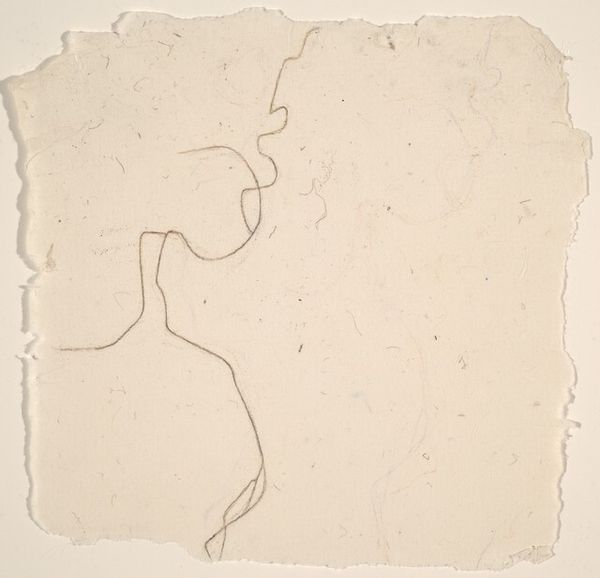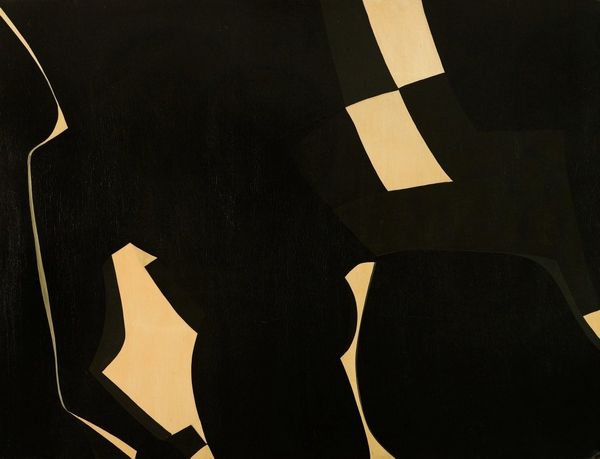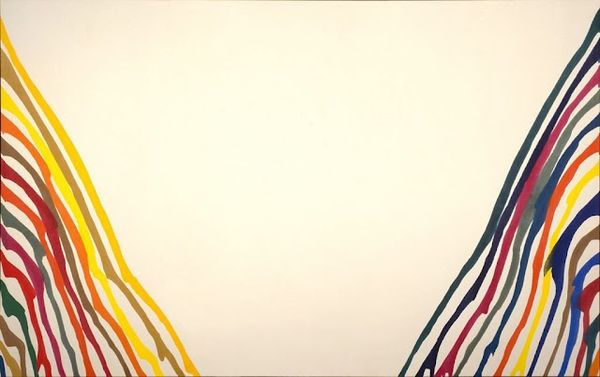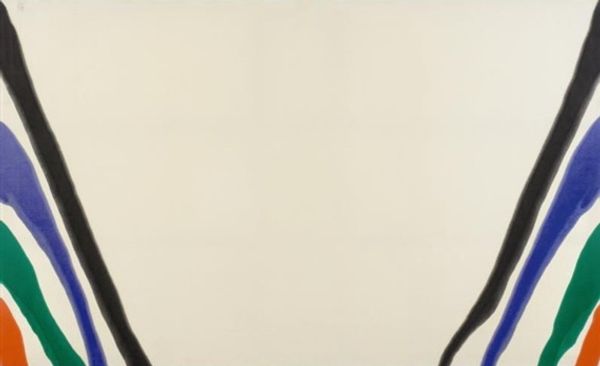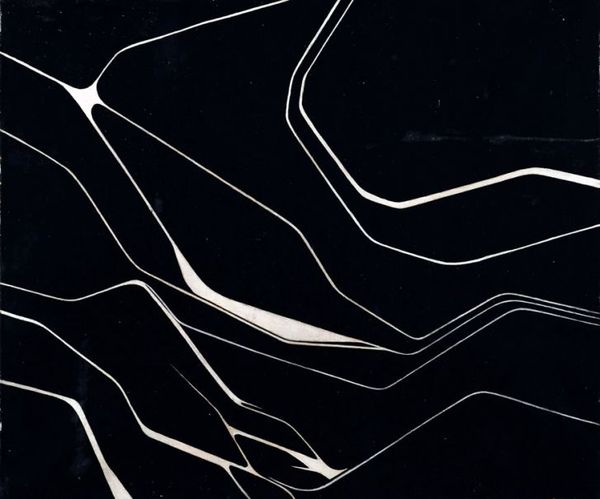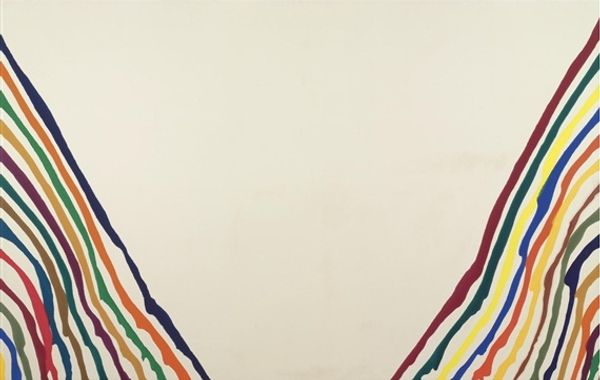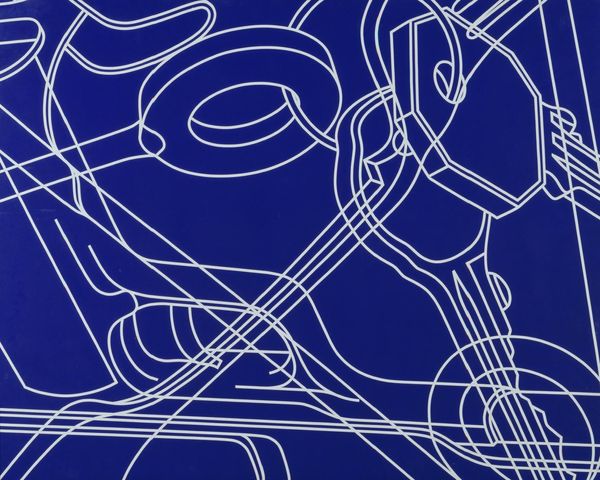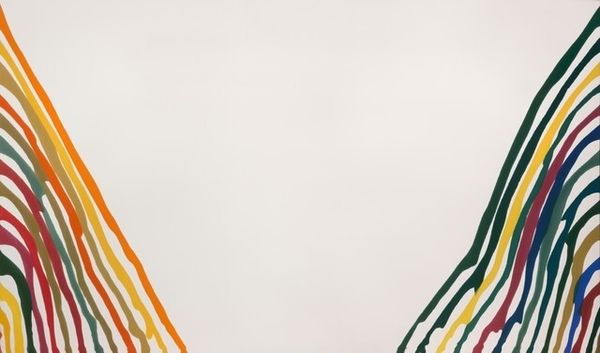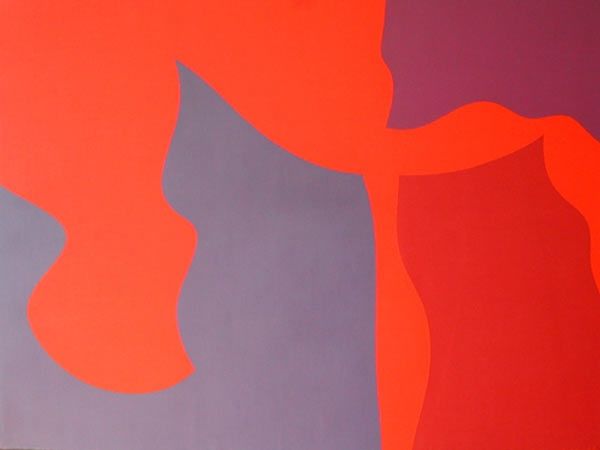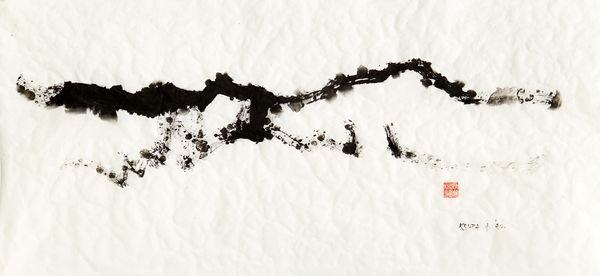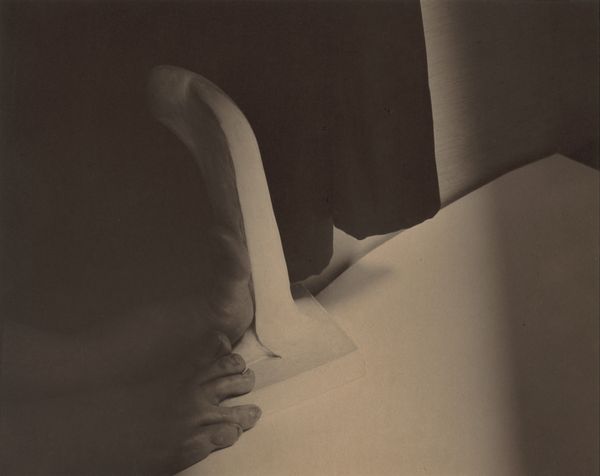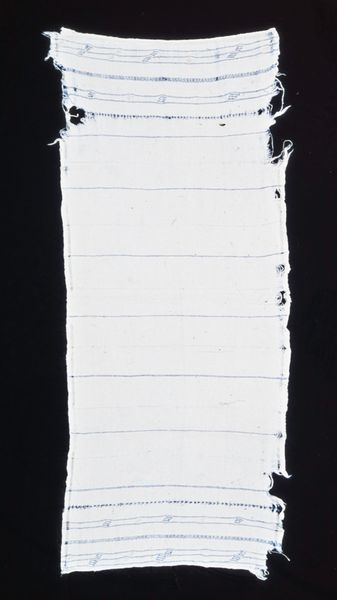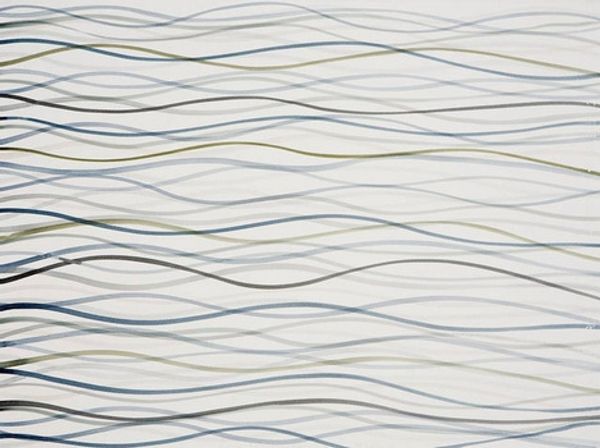
Dimensions: unconfirmed: 1850 x 1450 mm
Copyright: © John Murphy | CC-BY-NC-ND 4.0 DEED, Photo: Tate
Editor: Here we have John Murphy's *The Gathering Anguish Strikes Beneath…*, a large work with a minimal white line against a black ground. It evokes such a feeling of isolation. What's your take on it? Curator: It speaks to the historical power dynamics that silence certain voices, doesn’t it? The title suggests a hidden pain, a collective suffering. Who is allowed to express their anguish, and who is forced to internalize it? Editor: That’s a powerful way to look at it. I was just seeing the figure as alone. Curator: Consider how historical representations often prioritize certain bodies and experiences. This work challenges us to think about the unseen, the unrepresented anguish in society. It is a simple line, but has complex meaning. Editor: I never considered it in that light before. Thank you!
Comments
tate 6 months ago
⋮
http://www.tate.org.uk/art/artworks/murphy-the-gathering-anguish-strikes-beneath-t07763
Join the conversation
Join millions of artists and users on Artera today and experience the ultimate creative platform.
tate 6 months ago
⋮
The image in The Gathering Anguish Strikes Beneath... is a female profile inscribed in a continous white line on a dark ground. This motif is taken from a black and white lino-cut by Henri Matisse (1869-1954), made in 1943 as an illustration to Henri de Montherlant’s (1896–1972) novel Pasiphaë, published in the following year. It was from Montherlant’s text that Murphy also borrowed the line ‘The gathering anguish strikes beneath your throat’, which he used for the title of his own work. The backwards tilting angle of the figure and the sombre ground suggest that the subject is being undermined both psychologically and pictorially. Murphy chose this image for its ambiguity, as it seems to suggest both extreme pleasure and extreme anguish.Through this ambiguity of Pasiphaë’s pose, the artist in turn also alludes to Immanuel Kant’s notion of the Sublime, which can trigger emotions of both grief and pleasure simultaneously. In Greek mythology Pasiphaë, the daughter of Helios, was given in marriage to King Minos of Crete. When Minos refused to sacrifice a white bull to the sea god Poseidon, Pasiphaë was cursed by Poseidon with an irresistible passion for the bull. Driven mad with desire Pasiphaë mated with the animal and gave birth to the horrifying half-bull, half-human creature known as the Minotaur.This mythical beast represents the twin aspects of the human character – the intellectual and the bestial. By alluding to the Minotaur the artist thereby reaffirms the work’s overriding themes of opposition and turmoil.
